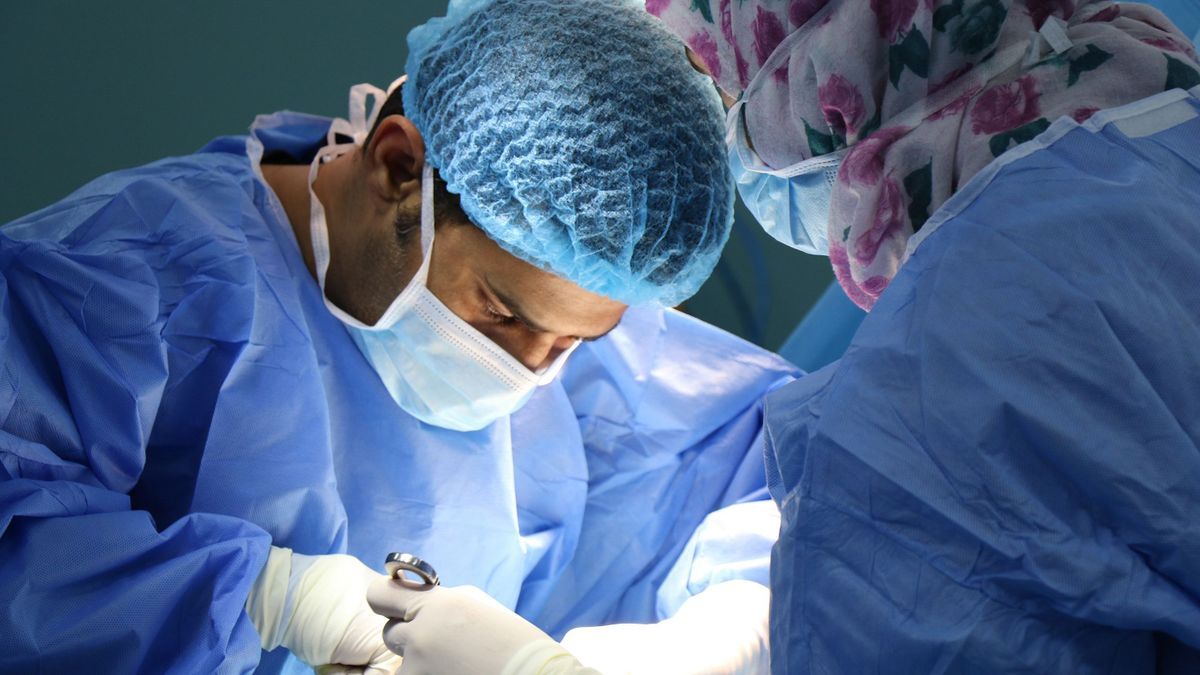
In some patients with Parkinson's disease, drug treatments can be supplemented with surgery, via a technique called “deep brain stimulation”. Effective but cumbersome, this operation is about to benefit from recent technological advances.
Operated four years ago, Jean-Louis Dufloux, 63, president of Europe Parkinson, speaks of a “resurrection”: “I knew that I would not be cured because the disease continued to progress, but it allowed me to repeat the actions of everyday life.“.
Mr. Dufloux is one of the 10% of patients with Parkinson's disease who are receptive to such an operation.
In the 1990s, a French team from Grenoble (center-east) discovered that deep stimulation of an area of the brain, the subthalamic nucleus, had a significant therapeutic effect against the symptoms of this disease.
Since then, hundreds of thousands of patients have been treated around the world, with a considerable improvement in their disorders: tremors, rigidity, slowness of movements, etc.
Long-term studies have shown that the beneficial effect lasts for at least ten years for most patients.
The technique consists of implanting two electrodes in the brain which will stimulate the subthalamic nuclei with a weak electrical current.
Reduce symptoms
Connected to a box containing a battery implanted under the skin, they send impulses which restore the normal functioning of the neural networks dependent on dopamine, which controls motor skills in particular.
The operation does not cure the disease which, according to the World Health Organization (WHO), affected more than 8.5 million people worldwide in 2019. But it is part of a crucial arsenal to reduce the symptoms.
Offered as first-line drugs, they act by compensating for a dopamine deficiency. But after five to ten years, complications arise, with the appearance of “on-off” phases: treatment effectiveness which varies throughout the day.
This is where deep brain stimulation can come into play. In eligible patients, it can restore the effectiveness of medications.
The “ideal” candidate must be relatively young (under 70 years old), not have significant cognitive disorders and disorders that still respond to treatment.
Certainly, “this operation, offered in only 20 centers in Europe, remained a very heavy surgical procedure for a long time“, underlines Michel Lefranc, neurosurgeon at Amiens University Hospital (north).
But recent technological advances are changing the situation: “advances made in the field of imaging guidance make it possible to optimally target the positioning of the electrodes“, he describes.
400 patients per year
In his department, the use of software creating a digital twin of the patient's brain also makes 3D simulations possible before the intervention, which saves patients from long, grueling motor tests.
At the Amiens University Hospital, the operation now lasts less than 4 hours and is followed by a hospitalization of 5 days on average, compared to a surgery of 10 hours and a hospitalization of 15 to 21 days a few years ago.
“The procedure is performed on a fully asleep patient, which greatly improves the patient's comfort.“, underlines Mélissa Tir, neurologist at the expert Parkinson center of this establishment.
“The operation has been modernized, we can now do without neurophysiological recordings in the operating room“, agrees Marc Zanello, neurosurgeon at Sainte-Anne, in Paris. “We must now be able to disseminate the innovation in all centers, which will perhaps make it possible to treat more patients.“, he said.
Today in Europe, around 400 Parkinson's patients are “implanted” each year knowing that, according to Public Health Europe, 175,000 people were monitored for this disease in 2020.
Work is also underway to enable stimulation that would be triggered solely according to the patient's needs. “Today, it takes place continuously, which can have the effect of deteriorating certain functions, such as speaking or walking.“, explains Romain Carron, neurosurgeon at La Timone hospital (AP-HM) in Marseille.
To the future, “the idea would be to be able to trigger electrical stimulation only when the patient cannot initiate a movement for example or when a tremor is detected“, he illustrates.
